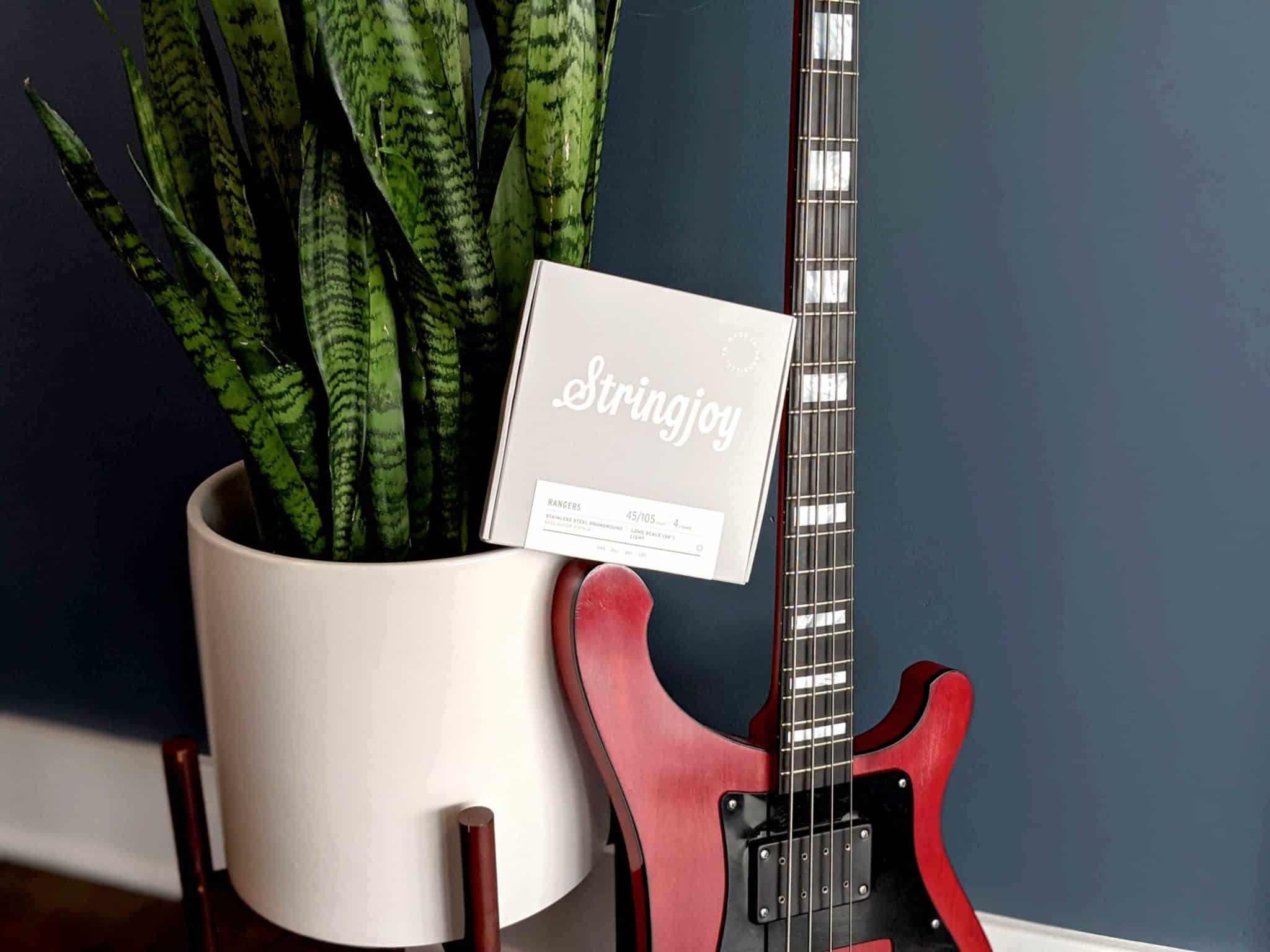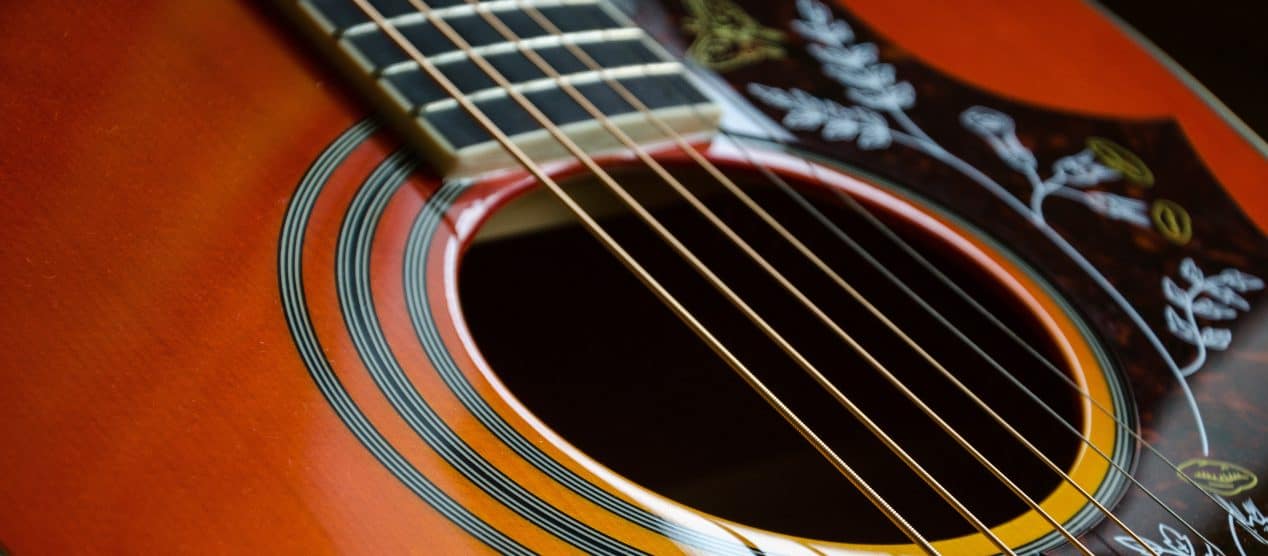There’s nothing worse than a guitar that just will not stay in tune… Like we always say, time spent tuning is time that could be spent playing. Well, try these easy tips and see if you can’t solve those tuning stability issues once and for all.
Be sure to subscribe to our YouTube channel to keep up with more great videos like this one:
Transcription
Does it seem like no matter what you do, your guitar just won’t stay in tune? Well, no worries. We’ve all been there before. The good news is, all is not lost. Today, I’m going to show you a couple of the areas on the guitar that can cause tuning issues, and more importantly, I’m going to talk about what you can do about it so that your guitar will stay in tune a little bit better.The less time you spend tuning your guitar, the more time you have to play your guitar, so let’s dive in.
One of the first places I usually look when a guitar seems to have some tuning issues is on to the tuning pegs. These will arrayed a little bit differently depending on what type of guitar you have. I have an old ’80s Strat here, so obviously, they’re all on one side.
Here on these pegs, on these, they have little screws in the side that can control the tightness of how they turn, and the nice thing is you can adjust those with a simple flathead screwdriver. If you tune these different tuning pegs, just pull that out a little bit. You can feel how tight or how loose they are. So all right this A string, we can feel is a lot looser than the low E string. Now we don’t want these to be too tight, just because it can be kind of hard to tune them when they’re way too tight. But we want to have them to have a little bit more than, you know this A has. That we don’t want a ton of slack in here.
So all we have to do to tighten this, is use a flathead screwdriver, get it in the slot. Stop the peg from turning while we turn the screwdriver just slightly. You don’t have to turn it too much to get it to work just right. And there we have it. Now there’s just the right amount of slack on this tuning peg and it’s not going to fall out of tune too easily. I would just continue to do this, checking each tuning machine. Making sure they kind of feel just right and they all feel really similarly and just dial it in just the way that you want it.
The next place I like to look, when I’m experiencing tuning stability issues is the nut of the guitar. In a perfect world, when you turn the tuning peg, the string slides right through the nut and it doesn’t encounter too much friction enabling everything to be a nice balance. When the nut snags the string just a little bit, that usually happens whether it’s a little bit dirty, isn’t properly lubricated with some graphite or if it’s cut too small for the gauge of string you’re using. When that happens, the nut snags the string just slightly and then eventually the string will sort of pop and suddenly be in a different tuning than it was before. You might’ve experienced this before. That’s because your nut is causing some issues with your guitar again. Whether it’s too tight or in most cases, just not properly lubricated.
So the good news is, this is actually a pretty easy fix. So to demonstrate, I’m just going to pull this low E out of tension, so that we can slide it off the neck just slightly. On this nut slot right here, you can see I already have some graphite in there. But if you didn’t, it would just look all white. Basically, we’ll just take a mechanical pencil, this is the most budget-friendly approach. You can also certainly use nut slot lubricants, things like that. But if you have one of these lying around, it’ll do a really good job too.
All we want to do is draw in with this mechanical pencil at the base of the nut, as well as kind of cutting over the sides a little bit too. Just to ensure that’s all covered in graphite. Just pop the string back on. Tune it back up. Now just from that, it’s going to lubricate the nut really nicely to ensure that the string isn’t going to get any snags there and you’re not going to have those weird pops or just general things that are going to pull the guitar out of tuning. If your nut is cut a little bit too tight for the strings that you’re using, little bit of fine grain sandpaper can be used to help widen that a little bit. If you’re not comfortable with anything like that, just take it to a tech. It’s a really easy job to get done.
Now one possibility to consider when it comes to your guitar’s tuning, is that it might not be the tuning of the open strings that’s the problem. It’s actually the intonation of the guitar. At it’s most basic, intonation involves ensuring that every single fret on the guitar is giving you the true, in-tune note. So that you’re open E is the same as your E at the 12th fret for example. Of course, it’s an octave higher.
Intonation is a whole world, it merits a whole video all on its own. There’s a couple really great ones that we’ll link to in the comments. We’ll also make some in the future that’ll how to intonate guitars in depth because it varies from one guitar style to the other. One other thing to look at, is the truss rod as well. If the relief isn’t properly set in the neck, that’s going to cause intonation overall. Not string by string, but just on the entire neck of the guitar. So I would consider this and I would look into see whether the tuning problems you’re experiencing are with the open strings or are where they’re fretted. Because learning a little bit about how to intonate your guitar or even having a tech take it in, get it set up for you for a few bucks, is well worth it and can do wonders to ensure that anywhere you’re fretting on the guitar, you’re playing actually in tune in pitch notes.
The next thing to keep in mind when it comes to your guitar’s tuning is climate. Climate can have a huge effect on guitars. Change in a few degrees of temperature, whether higher or lower can really affect the tuning of the strings and seasonal changes like humidity or overall temperature can really affect the curvature of the neck and merit some trust rod work occasionally. One of the biggest factors that effects a guitar’s tuning is climate. There’s really two different ways to look at this. The first is just general climate changes like you see when you take your guitar from your bedroom to a gig. That might take the string sharp or it might pull them flat. In those cases, you just want to tune up once you get to the gig.
One old trick is, if you have the time, keep your guitar in its case in the new climate for about 30 minutes before taking it out. That usually help it slowly adjust to the new climate instead of shocking it. But in general, all you want to do is ensure that you’re always tuning your guitar before a gig or when you take it into a new climate. So that you can help combat those changes in climate and what they do to your guitar strings.
The other component of this is more seasonal climate changes, which can really affect how your guitar plays. Basically, in the summer in most parts of the US ends up being more humid. In the winter, it’s a lot drier, especially with your heating blaring in your house. These can really affect the relief of your neck. So it’s always a good idea to check seasonally where your neck relief is and see if you might have to do a little bit of trust rod work or just change the intonation.
In most cases, it’s not a thing that you’re going to have to do every week. It’s just something to be aware of as you’re playing and be able to tell when those differences happen. So that every couple of months you can keep an eye and see if there’s any sort of small adjustments you need to make to keep your guitar playing the way that you want it to.
Another thing to keep in mind, is how your guitar’s strap can actually affect the tuning. Now if you’re using regular strap buttons or strap locks, it’s probably not going to be a big deal at all. However, if you’re going old school like Bob Dylan used to and wrapping your strap around the head stock with a string or something like that. That can actually affect your guitar’s tuning. So if you’re doing that and you’re able to avoid it, I would recommend it if you care about keeping your guitar in tune.
The final place to look if you’re experiencing tuning stability issues on your guitar, is of course the strings. If you’re using a quality set of guitar strings, they’re going to intonate just fine for quite some time. But even great guitar strings are eventually going to start to wear out on you. You’ll notice them not holding pitch very well while you’re playing. You might notice them constantly going out of tune when you pull your guitar out of your case. And if you’ve checked over every other issue that we’ve going through before, you might want to look at the strings.
The best thing you can do is just ensure that you’re keeping fresh strings on your guitar. That depends how much you play and how well you take care of them. But in general, somewhere between two weeks and eight weeks is an ideal place for most guitarists. We certainly have some guitarists that will play the same set of strings for many, many months and have no problem at all. But in general, the quicker you’re changing your strings and the more that you’re ensuring that they’re not getting dirty on you or really wearing out on the guitar, the less tuning stability issues you’re going to have to worry about.
Now I want to give you one bonus tip that may or may not help your strings stay in tune also. This is a bit of a controversial issue. Some people say it doesn’t work at all. A lot of people swear by it. As far as I’m concerned, it’s worth it since it’s pretty simple. All you want to do is when you’re tuning your guitar, ensure that you’re always tuning up to pitch. So if you’re a little bit sharp, the trick is to take your guitar a little bit flat and then tune it up to the proper pitch. Again people have argued about this for a couple decades. I’ve never really seen one side come out on top as far as what works best. But personally, I use it. It’s worked well for me and I certainly have no complaints. So it might be worth trying to ensure that you’re always tuning up to pitch, just to play it safe and see if it has any affect for you.
So what do you think? Do you have another tip that we didn’t go over here? Let us know about it down in the comments.









3 Responses
I play a 9 string, and 8 string and 12 string guitars. My 9 and 8 strings are almost unplayable because by the time my bottom 6 strings are I tune, the top 2-3 are totally out. Or, I can get the top 2 in tune, but nothing else.
Any ideas on how I can make my 8 and 9 string guitars playable?
Just sent you an email ?
Another thing to ensure accurate tuning is to tune to the pick attack , that way the initial attack of the pick will be the sound the player will hear first , usually the note gos flat at it sustains and a lot of this has to do with the amount of pressure your using while fretting . So fretting with the right amount of pressure also will insure each note is in tune , a lot of times players will be playing and not pay any attention to how much their fingers are bending the strings hen fretting and it may be enough to sound like it’s out of tune . Also bigger gauge strings seem to stay in tune better then smaller gauge strings .